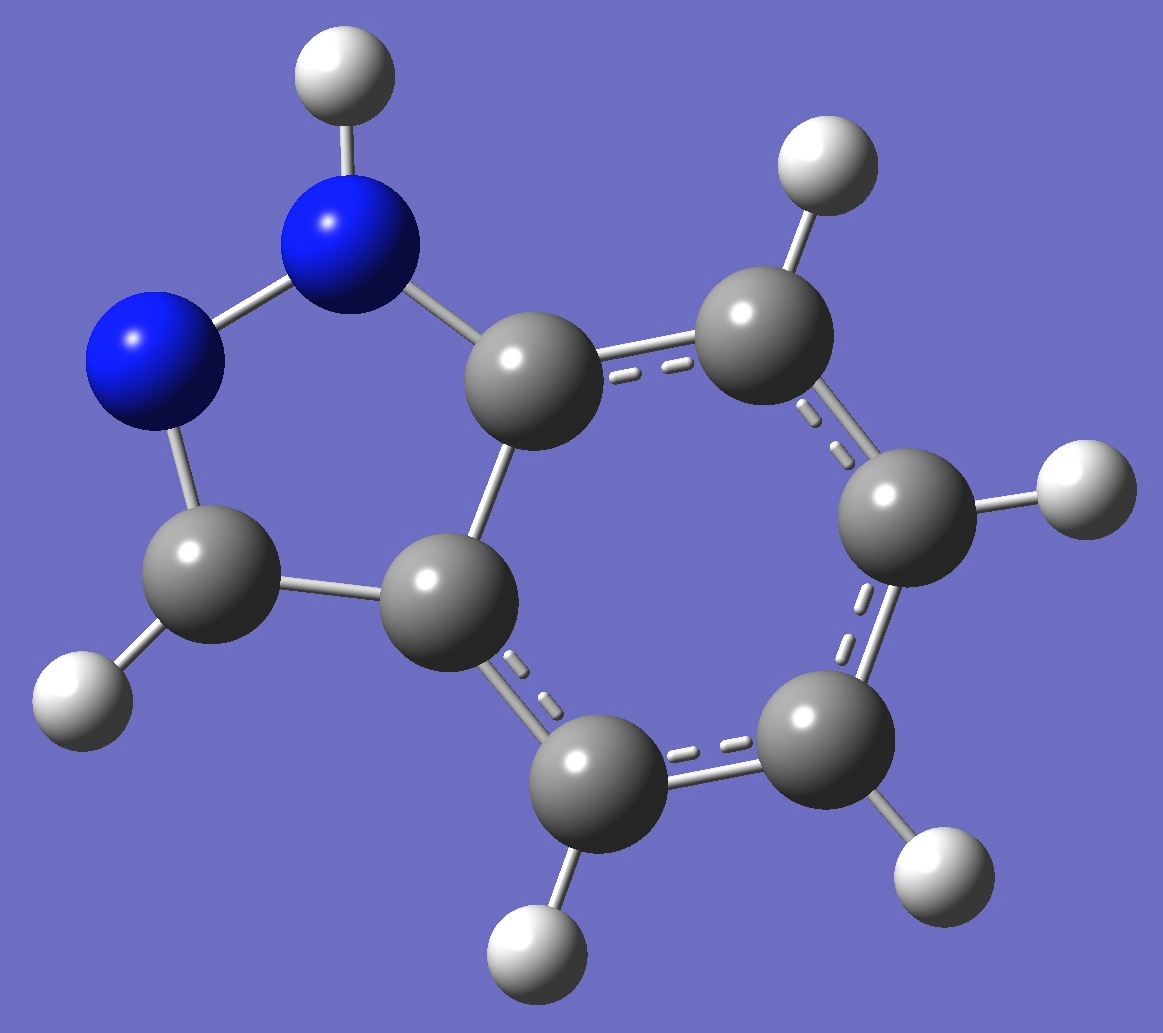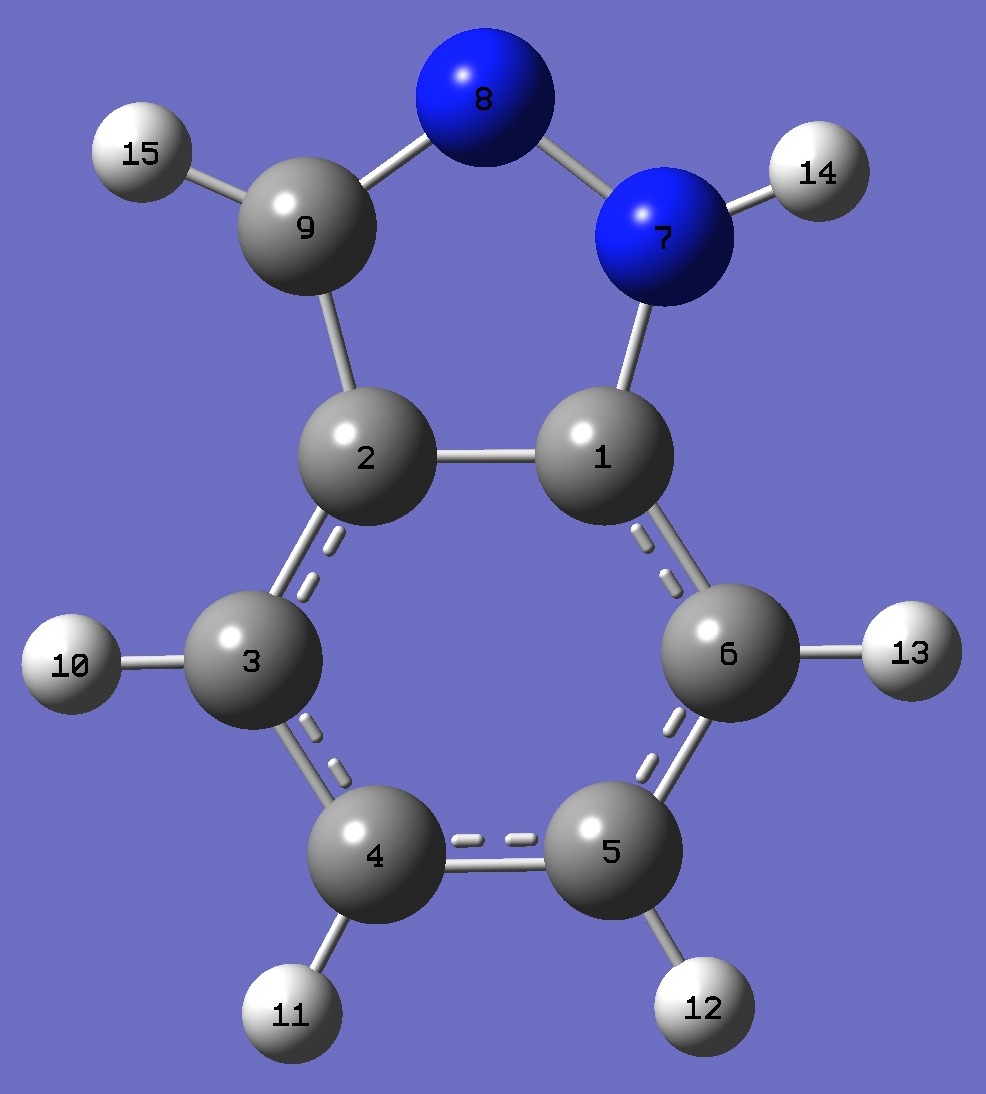
| |
|||||||
| Table 1. Nitrogen (Pyrrolic) nqcc's in Indazole (MHz). Calculation was made
on B3LYP/cc-pVTZ ropt structure. |
|||||||
| |
|||||||
| Calc. | Expt. [2] |
||||||
| |
|||||||
| 14N | Xaa | 1.973 |
1.9688(52) |
||||
| Xbb | 1.951 |
1.9310(48) |
|||||
| Xcc | - |
3.925 |
3.8998(48) |
||||
| |Xab| | 0.783 |
||||||
| RMS |
0.019 (0.7 %) |
||||||
| RSD | 0.030 (1.3 %) | ||||||
| Xxx | 1.179 | ||||||
| Xyy | 2.746 | ||||||
| Xzz | - | 3.925 | |||||
| ETA | 0.399 | ||||||
| Øz,c | 0. | ||||||
| |
|||||||
| Table 2. Nitrogen (Pyridinic) nqcc's in Indazole (MHz). Calculation was made
on B3LYP/cc-pVTZ ropt structure. |
|||||||
| |
|||||||
| Calc | Expt [2] |
||||||
| |
|||||||
| 14N | Xaa | - | 4.078 | - |
4.0462(41) |
||
| Xbb | 2.655 | 2.6841(47) |
|||||
| Xcc | 1.423 | 1.3621(47) |
|||||
| |Xab| | 2.509 | ||||||
| RMS |
0.043 (1.6 %) |
||||||
| RSD | 0.030 (1.3 %) | ||||||
| Xxx | 3.488 | ||||||
| Xyy | 1.423 | ||||||
| Xzz | - | 4.911 | |||||
| ETA | - | 0.420 | |||||
| Øz,a | 18.35 | ||||||
| Øa,bi | 0.97 |
||||||
| Øz,bi * | 17.38 | ||||||
| Table
4. Indazole. Rotational Constants (MHz), Dipole Moments
(D), and Quartic Centrifugal Distortion Constants (kHz). Calc =
B3LYP/cc-pVTZ |
|||||
| Calc | Expt [2] |
||||
| A |
4010. | 3977.93108(45) |
|||
| B |
1641. | 1633.27746(22) |
|||
| C |
1164. | 1158.13382(21) |
|||
| |µa| |
1.25 | ||||
| |µb| | 1.13 |
||||
| Delta_J |
0.0347 |
0.0255(36) |
|||
| Delta_JK | 0.0461 |
0.0419(87) |
|||
| Delta_K | 0.301 |
0.323(46) |
|||
| delta_J | 0.0105 |
||||
| delta_K | 0.0913 |
||||
